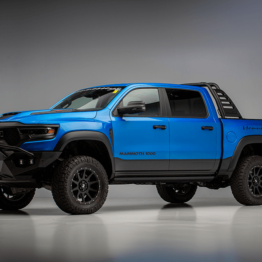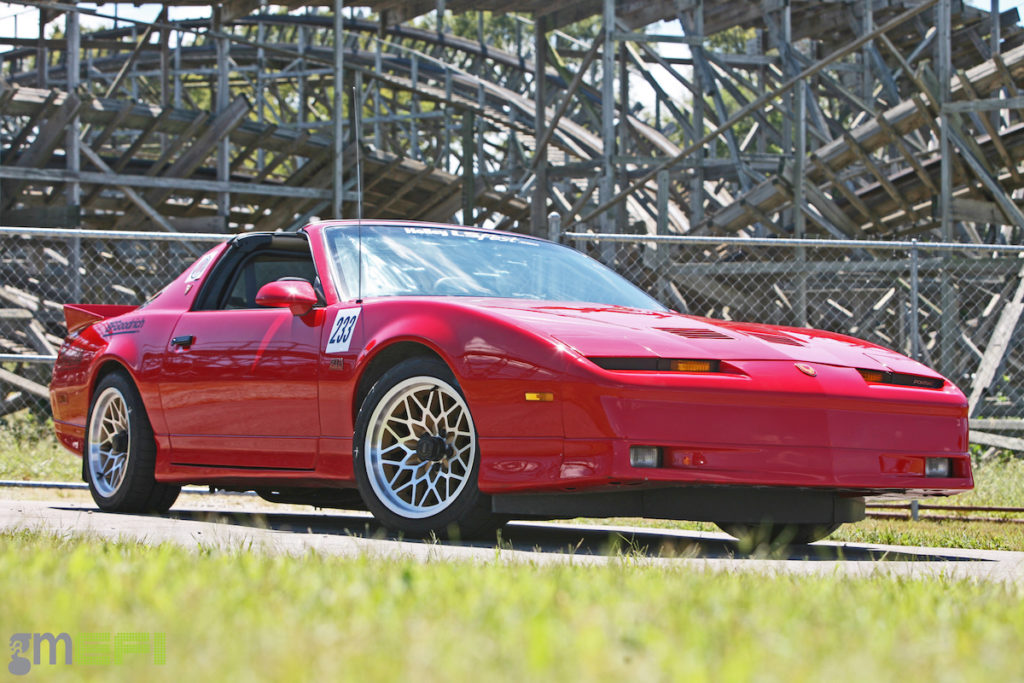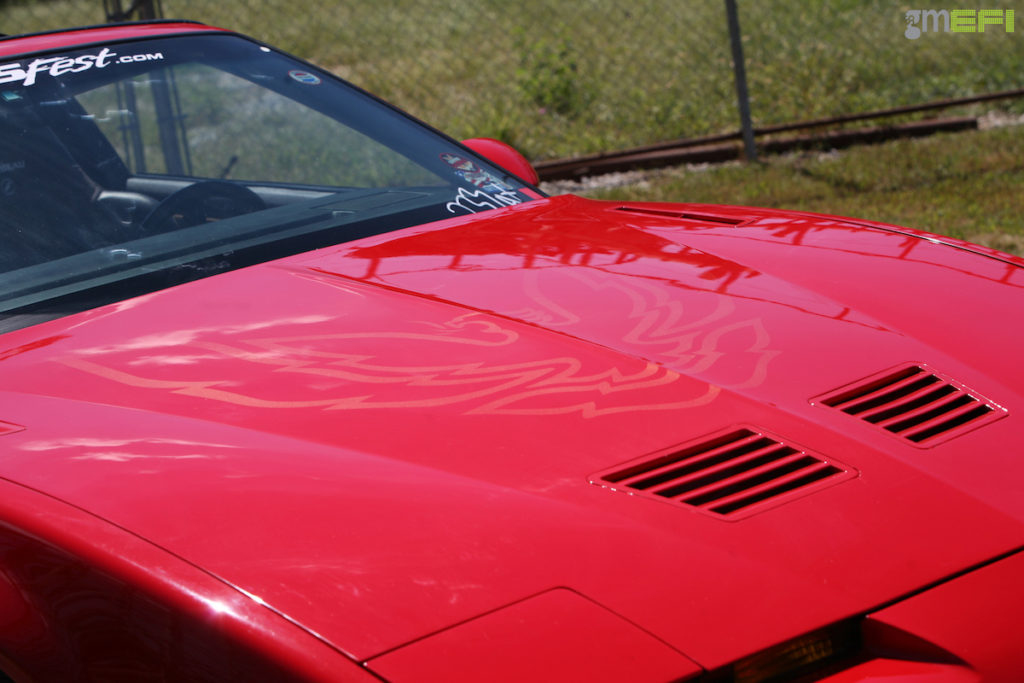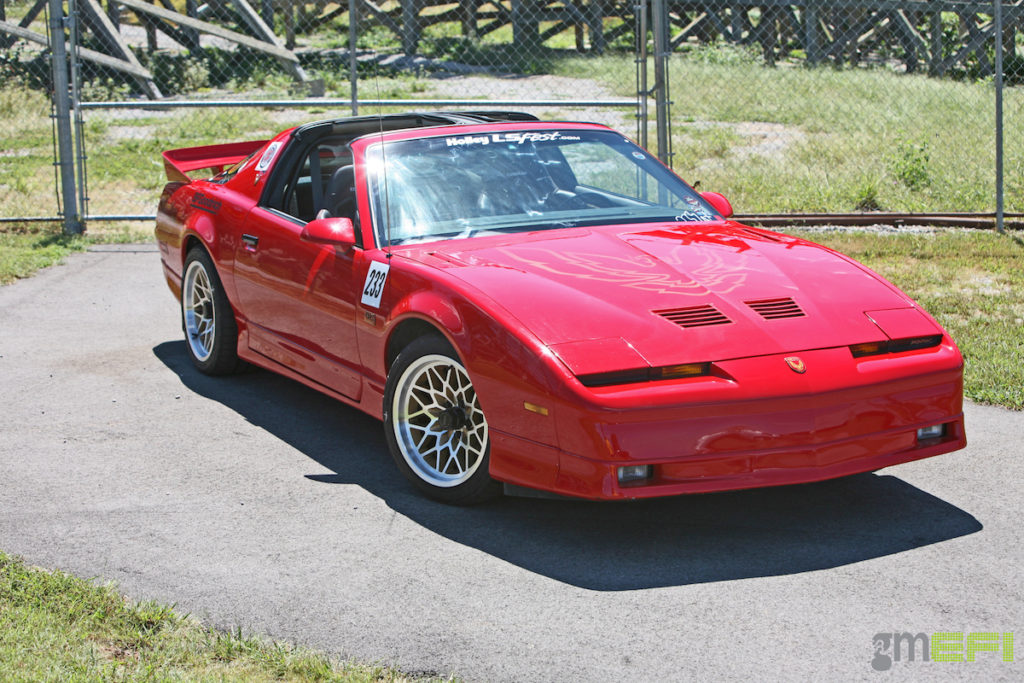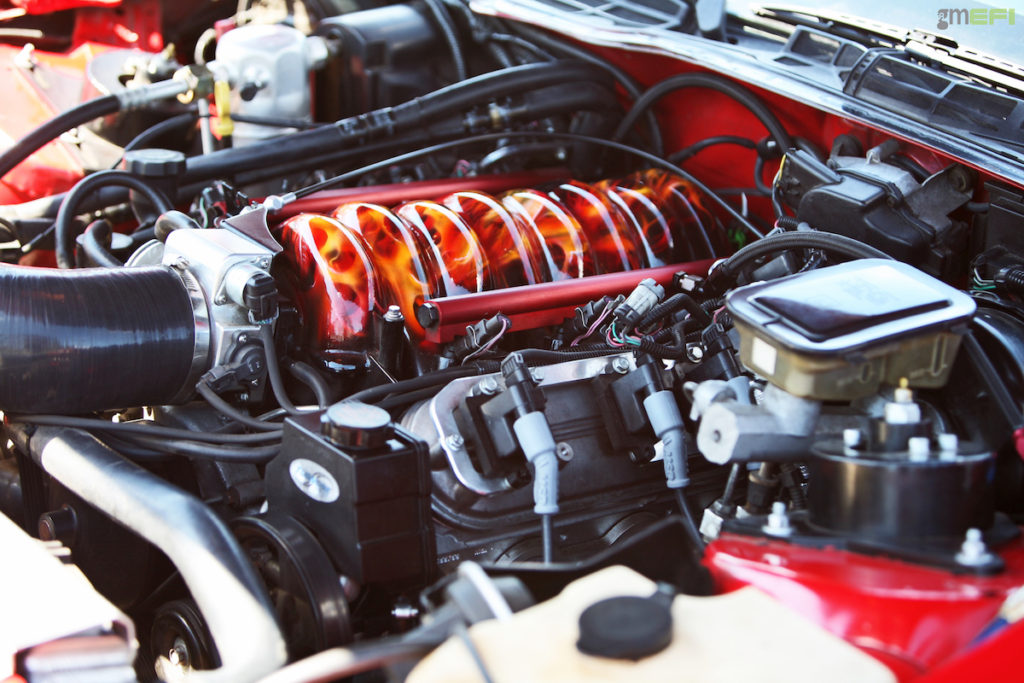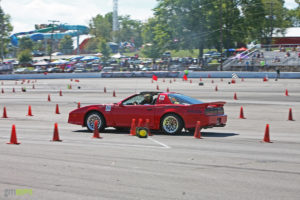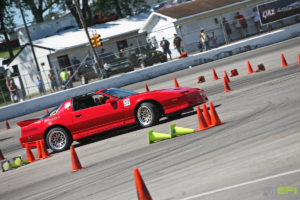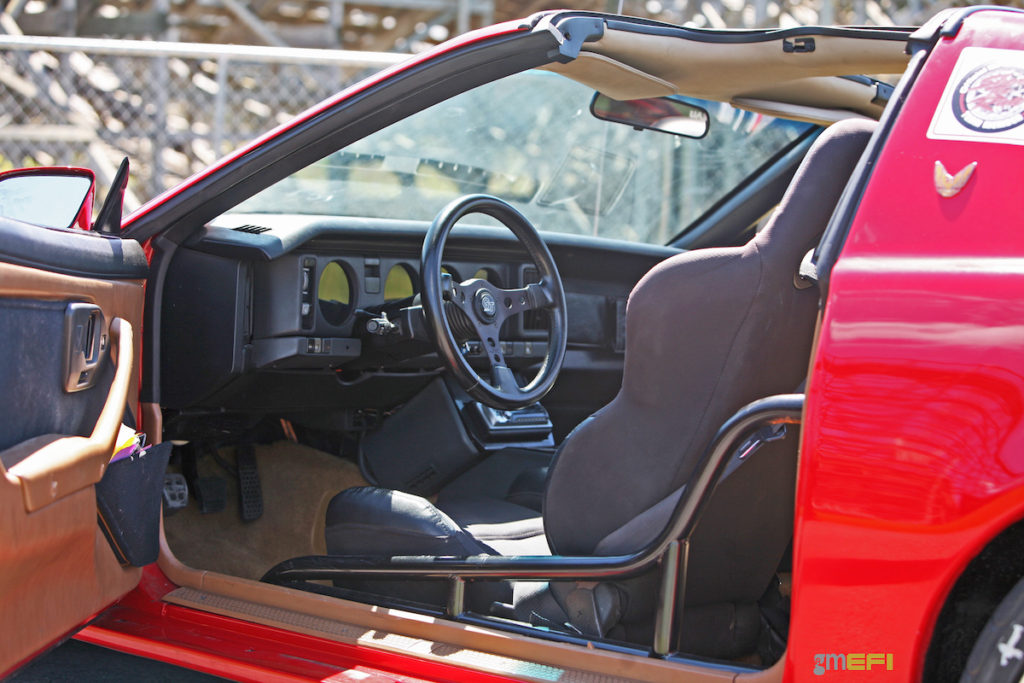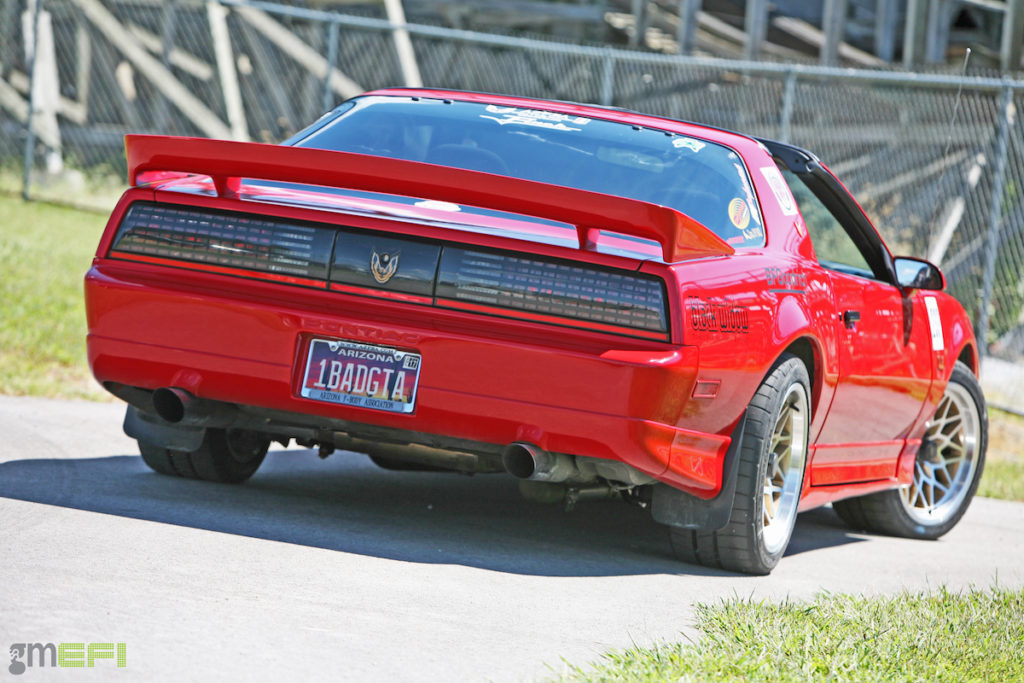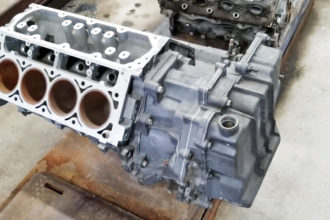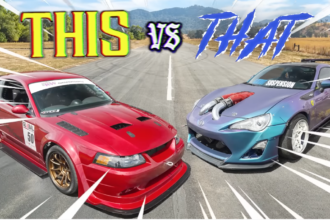photos by: the author
This Underdog Third-Gen is Quickly Earning its Ranks in the Autocross Community
For those of you who have been following along with our ongoing Project Redrum series, you may have already guessed that we have a soft spot for the 3rd-Gen F-bodies. Sleek, low slung, aerodynamic and with incredible handling capabilities for their day, they offered the “high-image” performance enthusiast just about everything he or she would want form a performance car in the 1980s. Everything, except [real] power.
Sure, you could argue that the 350 TPI examples were very decent for the time, but the earlier cars were simply horrific and nine-times-out-of-ten, the 5-liter Fox-Body Mustangs would simply embarrass the far more lavish and far better-looking Camaros and Trans Ams. You can chalk that up to equal V8 horsepower emitting from a car that was nearly relative both in terms of size and weight to GM’s own econobox J-body. I mean, if you were to drop a 305 TPI into a Cavalier and convert it to rear wheel drive, it better be quicker than a Camaro! But we digress.
General Motors knew that they were at a disadvantage in the power/weight ratio department when it came to the F-body, so they focused quite a bit of their efforts on the handling front. Whereas the Mustang was a one-trick pony, being quick in a straight line but couldn’t stop or handle to save its life, the corners were where the F-body shined! In fact, GM put so much emphasis on handling prowess, that in addition to the WS6 handling/performance package found in the Pontiac version, both the Camaro and Firebird offered the 1LE package.
We could get into all of the details on the 1LE, but let’s just say that they could still hold their own today against much more modern and sophisticated cars. Road racers still flock to these cars in droves, convincing even today’s aftermarket suspension companies to release new hardware for them. Which leads us to Valerie Pichette, and her ’88 GTA.
Between her and her husband, Tom, the Pichettes have amassed a nice little collection of Camaros and Firebirds ranging from every generation, apart from the 6th, including this top-tier GTA from the late-eighties. After stumbling upon the GTA in 2008, the car found its way in Valerie’s garage by way of virtue and pursuit.
Being enamored with the cars since they were new, both due to the fact that Valerie lived nearby to the old DKM headquarters (home of the Macho and MSE Trans Ams of the mullet era), as well as being a Knight Rider fan, it only seemed natural that she’d ultimately end up with a third-gen Firebird of her own at some point.
However, it was not without its difficulties as the original engine failed almost immediately after purchase. While replacing the valve stem seals the rings blew out during pressure testing cylinder number-5, sidelining the car. It was replaced by a relatively stock 350 TPI with a polished plenum. After dabbling with the dragstrip for a bit, the Pichette’s decided to turn their attention to autocross after being introduced to it by a local Corvette club.
This would eventually lead to attending other pro-touring events throughout their home base of Arizona, neighboring SoCal and other events in the Southwest. More power was ultimately needed, so the SBC received a bump in displacement and in horsepower, increasing capacity to 383 cubic-inches, the compression to 11:1 and installing a TPiS Mini-Ram intake manifold. The car would rev far past redline and it became incredibly impressive to those it competed against, but it ultimately began cooking transmissions left and right.
The Pichettes became a staple at various events from coast to coast and even landed them at the Holley LS Fest in 2012 as onlookers. Once back at the shop in Arizona, it became apparent that it was time to ditch the throwback engine altogether, and finally go LS-powered.
Turning to a heads and cam-upgraded LS1 and a 4L60E, the GTA went under the knife over the winter of 2013 and reemerged for its first race in February of 2014. Holding its own at countless events all over the country, the LS1 eventually gave up the ghost so the Prichettes decided to get serious with a 418 cubic-inch LS3 stroker and a Magnum T-56 gearbox.
Starting with a stock GM LS3 block, the bottom end received a forged crank and H-beam connecting rods from Texas Speed and slugs from Wiseco. The factory compression ratio of 10.5:1 remains intact, while Chevrolet Performance CNC-ported cylinder heads stuffed with stock intake and exhaust valves and rockers with a trunnion upgrade complete the long-block. 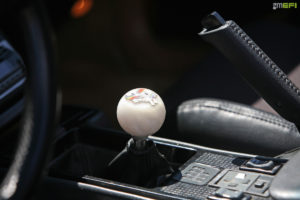
Air is fed to the engine, through a K&N air filter, factory C5 Z06 MAF sensor, Nick Williams 92mm throttle body and stock LS3 intake manifold. The spark is provided with the help of stock LS1 coil packs, MSD wires and Autolite spark plugs.
It doesn’t take a whole lot of work to bring the fuel system up to snuff, but the Pichettes did so with a Walbro 255 pump, hotwire kit and an Aeromotive adjustable regulator set at 56-psi.
The stroker LS3 relies on Stainless Works 1-7/8 inch diameter long-tube headers with 3-inch diameter exhaust tubing and a Black Widow Venom 250 muffler to expel its spelt fumes and provide a killer soundtrack. With Westech Performance handling tuning duties on the 2002 Camaro ECU, the GTA now produces 442 hp and 425-lb ft of torque at the rear wheels.
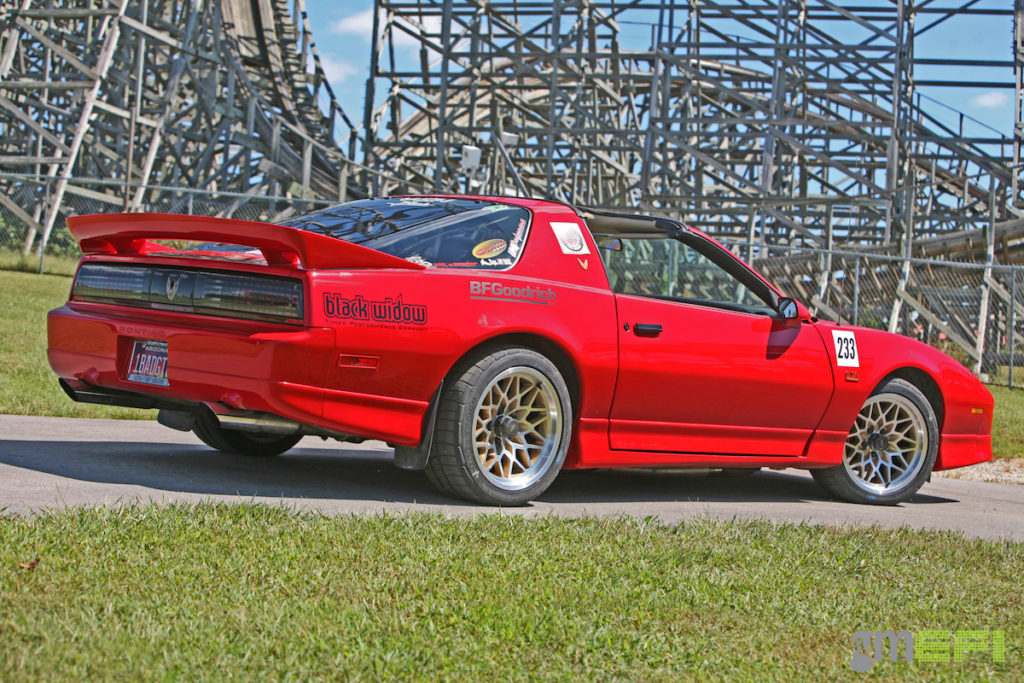
Now of course, the the stock drivetran wouldn’t be able to handle neither the abuse nor the sheer output of the powerplant itself, so the Magnum-grade T-56 helps send the power to the Moser 12-bolt rearend through a Centerforce DYAD twin-disc and flywheel. A 3-inch chromoly driveshaft connect the two, while a 3.42 gear set, 33-spline Moser axles and Eaton TruTrac hold it all together.
It’s a given that any competent autocross contender or road course-destined racer would need a hard-hitting suspension system to rely on in the corners, so there has been a substantial amount of surgery underneath that body.
Starting up front, a set of BMR tubular front lower control arms connect to a tubular K-member that drops weight and allow for adjustability and increased engine bay access from underneath. UMI adjustable trans-mounted torque arm, Panhard bar, rear lower control arms with Roto-Joint ends and UMI/Afco adjustable coil-overs (front and rear) allow increased strength, improved handling and even more adjustability when Valerie switches from the street to the track. GM 1LE front and rear sway bars also help with capability in the corners.
The OEM brakes can only do so much, so Tom and Valerie have improved upon them with the help of Wilwood 4-piston calipers with 12.19-inch rotors in the front, with factory rear discs out back. They’re usually tucked behind a set of Forgeline 18×10.5 inch GW3R rollers, wrapped in BFG Rival S rubber measuring in at 315/30/18, but during our shoot and at many events, they can be seen riding on their 17-inch YearOne snowflake wheels.
The cockpit has since been modernized with a Finch Performance 6-point chromoly roll bar, fire extinguisher and Corbeau black racing seats (with tan/black cloth seats in the rear) for improved safety. A MGW short-throw shifter with a Rainbow Dash shift knob help add some girlie style while improving throws with each gear change. Oh, and of course there’s the Grant GT steering wheel and Intellitronix digital gauge cluster to keep a more precise display on engine vitals over than the OEM counterparts could provide.
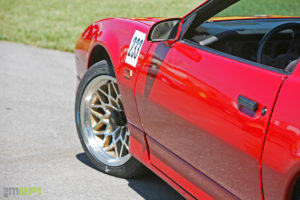 The body has been left largely stock; with only a Mecham rear spoiler upgrade (fitting, considering Valerie’s history with DKM) and a ghost-painted phoenix on the hood are the only notable changes. Realistically, though, the GTA has been repainted at least twice in its life, with Richard Malley doing the bodywork and laying the Torch Red color, and Moe Madrid of BadBoy Designs airbrushing the bird on the hood and spraying flames on the intake manifold.
The body has been left largely stock; with only a Mecham rear spoiler upgrade (fitting, considering Valerie’s history with DKM) and a ghost-painted phoenix on the hood are the only notable changes. Realistically, though, the GTA has been repainted at least twice in its life, with Richard Malley doing the bodywork and laying the Torch Red color, and Moe Madrid of BadBoy Designs airbrushing the bird on the hood and spraying flames on the intake manifold.
Mr. and Mrs. Pichette would like to thank Will Baty and Centerforce Clutches, Ryan Kirkwood and Ramey Wormer at UMI Performance, Darren Redmond at Forgeline Wheels, Rob and Trish Byrd of Racing Byrds, Scot Walkowiak from GNS Performance, Richard Winchester and Tim Cromer at BF Goodrich Tires, Bill Speed at Black Widow Performance Exhaust, Brian Finch and Andrew Tyler Powell at Finch Performance, Jeff Baluyot at Wilwood Brakes, Bill Howell, and Yancy Johns of American Streetcar Promotions, Ed Moss, Sal Solorzarno, Evan Daley, and Jason Wilcox from TCI Engineering for supporting many of the West Coast events.
They also want to lend a special thanks to Alexandra and Fred Zust of Blackwatch Racing and Dale Betram of Fairway Auto, who have been more than willing to jump in the passenger seat and instruct (and sometimes take the wheel) whenever the time allows at the various West Coast autocross and road course events.
TECH SHEET:
- CAR: 1988 Trans Am GTA
- OWNER: Valerie Pichette
- ENGINE BLOCK: LS3; (bored and stroked to 418 ci.)
- CRANKSHAFT: Texas Speed; forged
- PISTONS: Wiseco
- CONNECTING RODS: Texas Speed; H-beam
- CAMSHAFT: Lunati; hydraulic, 227/239 duration, 583/600 lift, 112 LSA
- CYLINDER HEADS: Chevrolet Performance; CNC-ported LS3
- ROCKER ARMS: GM; 1.7 ratio
- COMPRESSION RATIO: 10.5:1
- INDUCTION: LS3 intake manifold, K&N air filter, C6 Z06 MAF, Nick Williams 92mm throttle body
- IGNITION: GM coil packs, MSD spark plug wires, Autolite plugs
- EXHAUST: Stainless Works; 1-7/8 inch diameter stainless steel long-tube headers, 3-inch diameter tubing and Black Widow Venom 250 muffler
- FUEL DELIVERY: Walbro 255 pump, hotwire kit, Aeromotive adjustable regulator, 56-psi.
- OILING: Melling LS3 pump, ’98-02 LS1 F-body pan with Improved Racing trap door pan baffles and oil cooler crossover block with a 2-quart Accusump, oil cooler plumbed into the oiling system.
- TUNING: GM 411 ECU; tuned by Westech performance
- TRANSMISSION: Tremec T-56 Magnum
- CLUTCH: Centerforce DYAD twin-disc, flywheel
- DRIVESHAFT: 3-inch chromoly
- REAREND: Moser; 12-bolt; 3.42 gears, 33-spline axles, Eaton TruTrac
- SUSPENSION: BMR tubular front lower control arms, tubular K-member, UMI adjustable trans-mounted torque arm, adjustable Panhard bar, rear lower control arms w/RotoJoint ends, UMI/Afco adjustable coil-overs (front and rear), GM 1LE front and rear sway bars
- CHASSIS MODS: UMI subframe connectors
- BRAKES: Wilwood; 4-piston calipers, 12.19-inch rotors (front), factory rear discs
- WHEELS: YearOne; Snowflake, 17×9 (front and rear)
- TIRES: BFG; Rival S 255/40/17
- HP/TQ.: 442/425 (at the rear wheels)

Rick Seitz is the owner and founder of AutoCentric Media, and has a true love and passion for all vehicles; GM, Ford, Dodge, imports, trucks — you name it! When he isn’t clacking away on his keyboard, he’s building, tuning, driving or testing his current crop of personal projects!




